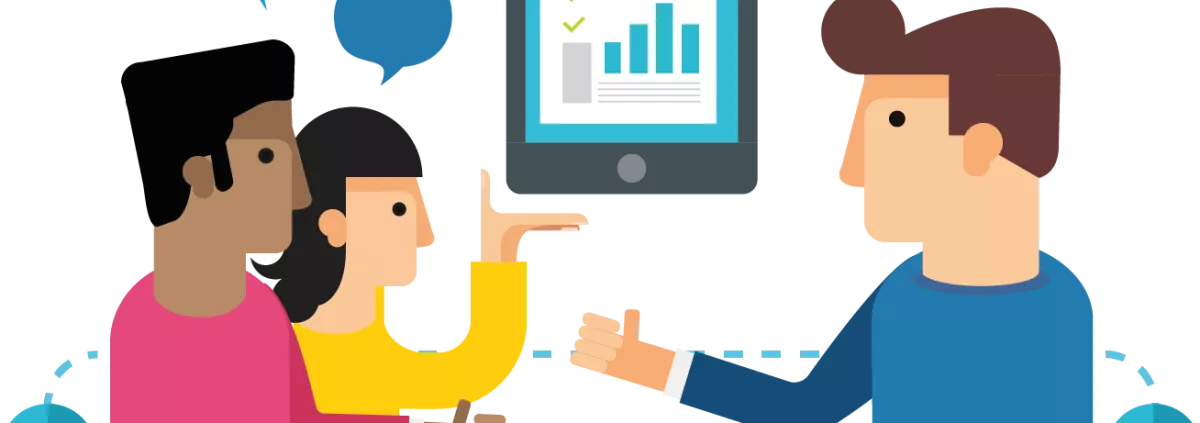In May 2021 the JRC of the European Commission, ETF and Azerbaijan National Bureau for ICT operated a joint ‘flight’ to schools in some regions of Azerbaijan. We call this ‘flight’ piloting of SELFIE tool in Azerbaijan. The take-off (kick-off meeting) was on the 3rd of May. Cabin crew of this ‘flight’ was made up of 12 school teachers – we call them SELFIE school coordinators. Our ‘passengers’ were school managers, teachers and students. 6425 passengers were ‘on board’ – 91 school leaders, 640 teachers and 5694 students. This ‘virtual tour’ passed through the 7 regions of Azerbaijan represented in the map below.

The SELFIE questionnaire
In some regions we virtually visited general schools, in others – vocational schools. There were regions where we visited both general and vocational schools. SELFIE allowed to looking at the use of digital technologies in education by offering the participating schools a tool and a methodology to self-reflect on their progress towards comprehensive integration and effective deployment of digital technologies into teaching, learning and student assessment and put outcomes into a development plan.
We saw many interesting and new things in this tour, which I had the pleasure to accompany. Let me tell you more about this exciting journey!
‘Cabin crew’ received short trainings just before the piloting exercise and organised their school teams for the journey. They booked places for their schools (i.e. registered their schools on SELFIE), identified the route (in other words, customised questionnaires) and issued e-tickets (created links for the assessment). Then they guided ‘passengers’ (meaning the survey participants) throughout the journey.
The SELFIE report: mountains, plains and canyons
We shot many SELFIEs in each school taken by school leaders, teachers and students – they are called ‘SELFIE school reports’ automatically generated by the SELFIE platform. The SELFIE ‘images’ (reports) were quite colourful. There were ‘mountains’, ‘plains’ and ‘canyons’ in the photos. Mountains represented high level of digital development in certain areas of education shown by high bar-charts in the reports, plains described average levels of development and by canyons we mean ‘cracks’ in the use of modern technology. When we looked at digital skills of students, including those acquired outside of school, we saw ‘mountains’. Infrastructure and equipment, availability of digital devices for free use by teachers and students and digital strategies were captured as ‘canyons’. Many of other fields were like ‘plains’.
Interestingly, students’ ‘cameras’, in general, had ‘toned lenses’, teachers’ cameras ‘brighter lenses’ and school leaders had the ‘brightest lenses’. In other words, when looking at the use of digital technologies in education and training, students were the most critical, while school leaders the most positive. Why school leaders struggled the most to identify challenges?
Upon landing on the 21st of May, school leaders looked at the aggregated results of their students and teachers. They saw challenges in their schools and discussed with their teams. One of the main challenges was related to infrastructure and equipment. It was the weakest area in 4 schools out of 12. There were not enough mobile devices for students and teachers and online libraries were not well developed; furthermore, students use digital devices at home mainly for fun and prior to COVID-19 they used very little technology at school.
Before the ‘flight’ we thought that schools would have emphasized the challenges related to ‘COVID-19’ in the background of their self-reflection. This was partly true: COVID-19, which hindered many traditional methods of training, on the other hand it accelerated digital developments and led to enhancing digital skills.
The action plan: problems and solutions
After looking at the results of the SELFIE reports, school teams developed action plans with possible solutions for improving the use of digital technologies at the school level and to better prepare for the next SELFIE exercise. It was not easy for school coordinators to interpret the data captured in the SELFIE report and write schools’ action plans, but with the support of the flight crew, they were successful at the end!
How was the SELFIE flight?
The SELFIE tour was good for understanding the growing role of digital technologies in education and training and improving communication among school leaders, teachers and students. We also understood that there is a need to scale up such self-assessments in all schools for improving the use of digital technology in education.
At the end of the journey, we asked ‘passengers’ to share their impressions about SELFIE. They rated it very high. We also conducted qualitative analysis to collect views of ‘crew members’ and ‘passengers’ for identifying any problems they faced and their recommendations for the future. The views were different. Some of the respondents suggested to shorten the ‘duration of the trip’ (i.e. SELFIE questionnaire) because they were busy with other tasks, while others asked for ‘more time’ (more detailed questionnaire, larger number of custom questions). We will think over this and identify a more convenient time for the ‘next SELFIE flight.
What’s next?
The finding of the pilot and the next steps will be discussed at the end of September with the involved schools and the national stakeholders. The SELFIE Pilot Azerbaijan report will be made available in Open Space in September, stay tuned and let us know your thoughts!
Amin Charkazov, SELFIE National expert

Thank you Tatiana! We hope.